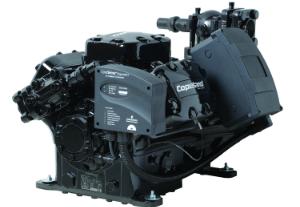 A correct technology in industrial refrigeration allows users to trust that the products they are acquiring for consumption will remain at ideal temperatures in order to avoid damage.
by Carlos C. Obella*
A correct technology in industrial refrigeration allows users to trust that the products they are acquiring for consumption will remain at ideal temperatures in order to avoid damage.
by Carlos C. Obella*
Operators of supermarket chains, convenience stores and other businesses; manufacturers of commercial refrigeration equipment, installers, contractors and technical maintenance personnel; all of them share the same concerns related to the deterioration of stored fresh products, caused by failures in the refrigeration system, specifically in the compressors that compose it.
Just to give an idea of the magnitude of the problem, up to 30% on average of the fresh foods that are marketed are wasted due to technical deficiencies in the cold chain, before they reach to be consumed at the family table.
A large part of that percentage falls on supermarket chains, convenience stores and other businesses that, in turn, invest a lot of money in refrigeration equipment that must preserve perishable products. The so-called losses in these products increase operating costs, which also include maintenance and energy consumption, negatively affecting the profits of the business.
In fact, more than 80% of compressor failures can be prevented thanks to periodic and adequate maintenance, but above all, thanks to early warning and a more accurate diagnosis when a failure occurs.
The CoreSense electronic technology, present in the Copeland Discus and Copeland Scroll compressors (images), is able to interpret the information generated by the same compressor during its operation, with the purpose of detecting and alerting about possible problems in anticipation of a failure, thus raising the existing levels of protection and diagnosis for the entire system.
Traditional refrigeration systems are not able to provide the operator with all the information he needs to optimize its operation. With this new electronic technology, supermarket chains and other end users have the possibility to verify the operation of their systems and be alerted to potential problems before they become irreversible and disruptive economic losses.
In a simple analogy with the human body, the compressor is the "heart" and vital center of the refrigeration system. By analyzing its operation, you can interpret what happens throughout the rest of the system. The exclusive algorithm that governs the reference technology relates the electrical consumption of the compressor, its response to the operating demand and the performance of the protection devices, with the aim of diagnosing, protecting and communicating possible operating conditions outside the range of application, mechanical and electrical failures typical of the system, in addition to relating their patterns of appearance and repetition.
Thanks to the application of complex and exclusive algorithms, this electronic technology alerts operators when it detects adverse operating conditions and is even able to turn off the compressor if necessary, in order to avoid major catastrophic damage to the system, thus saving time and a lot of money.
The technology in question also integrates a series of protection and control devices in the same module, originally installed in the compressor from the factory. This reduces the number of components needed to mount on the system during assembly, simplifies wiring, reduces the number of connection points, improves system quality and considerably simplifies installation.
It is now possible to diagnose, warn and protect a compressor against possible lubrication problems, excess discharge temperature and electrical failures in the engine, all from the same electronic device, which in turn stores information about the model and serial number of the compressor, in order to facilitate service in the field.
The reset, in case the device decides to turn off the compressor to protect it, can be done manually or remotely, acting in combination with E2E smart controllers (Fig. 3), provided by Emerson Retail Solutions. E2E controllers communicate via Modbus protocol directly with each compressor via the same CoreSense device.
On the one hand, the operator is able to easily and visually identify different levels of alert locally, through a very simple interpretation of codes that relate the number and color of flashes of light, with different types of problems:
1.Solid Green: Normal operation
2.Yellow Flashes: Alarm Codes
3.Red Flashes: Compressor Off For Protection
On the other hand, by navigating, both local and remote, through various screens of the E2E intelligent controller, the operator can visualize for each compressor the history, type and status of alarms, operating time and start and stop cycles, restore the operation of compressors turned off for protection, in addition to many other benefits in terms of control of the entire system.
These are just some of the benefits that electronic technology is bringing to commercial refrigeration in the twenty-first century. To these are added digital modulation strategies, electronic expansion valves, controllers for evaporators, all of them with electronic devices interconnected through an E2E executive processor, which through sophisticated software allows intelligent decisions related to the operation and service of the entire premises. This combination forms a true "smart supermarket or convenience store" (Fig. 4), more reliable and efficient, which leaves the end user to focus on what he knows and wants to do: sell more and better fresh products.
*Technical Director, Emerson Climate Technologies, Latin America













